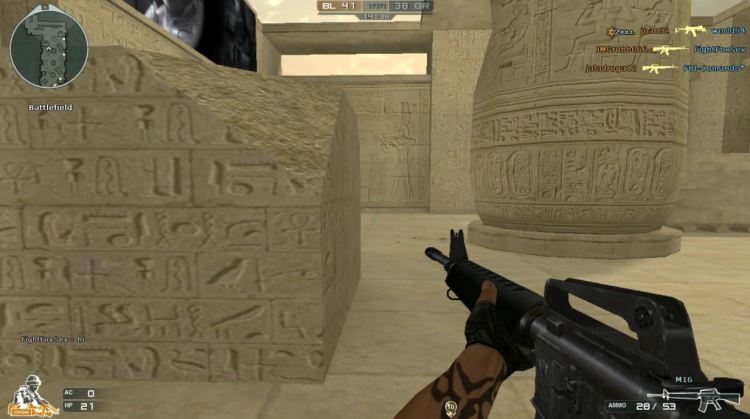I’m jacked into the world of games. I don’t play much Destiny or League of Legends, but I know what they are. I know they make a lot of money. I understand them.
Cross Fire, however, is a game I didn’t really understand. Maybe I still don’t.
Earlier today, we reported that Chinese publisher The9 put together a deal with South Korean developer Smilegate that is potentially worth $500 million plus royalties for the sequel to Cross Fire. This amount is similar to what Activision said it is planning to put behind Destiny over a 10-year period. That has to make Cross Fire 2 one of the biggest games in the world, a triple-A inevitable blockbuster that will have everyone in your gamer circles talking.
Only, of course, it won’t.
I’m betting most people reading this have never heard of Cross Fire, so how can it possibly command investments on par with Destiny? Well, the most reductive answer to that question is “China.”
Cross Fire makes around $1 billion every year. It has done so since at least 2013, when research firm SuperData started tracking the data. That puts it right alongside League of Legends and ahead of World of Tanks, Dota 2, and Counter-Strike: Global Offensive.
It is able to generate that level of revenue due to the huge level of spending in China. That nation on pace to pour $22.2 billion into consuming games 2015. That’s more than the United States, Japan, or any other country. That’s up from $13 billion in 2013. And while mobile is behind the bulk of the growth in Chinese spending, PC gaming is still responsible for bringing in the most money.
It doesn’t hurt that Chinese gamers play Cross Fire as well as League of Legends, Dota 2, Hearthstone, and a list of other games that are as popular in the East as they are in the West.
So Cross Fire is king of the Earth’s biggest gaming hill.
But should it be?
I finally installed Cross Fire, which has a North American version in English with a decent population of players. What I found is a cheap, aging Counter-Strike clone that seems difficult to navigate. I also found myself having an alright time.
People are still playing Counter-Strike for a reason, and a lot of the very basic elements that make that game cool and easy to pickup exist in Cross Fire. It’s easy to understand how to point and shoot, and it’s nice to just start instantly having fun after downloading a game for free.
And, honestly, the lackluster, crusty-looking visuals are a benefit for Cross Fire. China has a lot of people spending money on games, but that doesn’t necessarily mean they are investing thousands of dollars in top-of-the-line PC hardware. They probably have decent rigs, and they want games that can “run on anything.” World of Warcraft has found success for more than a decade with that strategy — especially in China — and that it works with Cross Fire as well.
Now, I’m probably never going to go back to Cross Fire. I own Counter-Strike: Global Offensive, and the Valve game is clearly better. It looks better. It has a cleaner interface. It’s more fun. It has a vibrant community of players and a competitive scene that is popping off. I’m sticking with that.
But I’m not Cross Fire’s or Cross Fire 2’s audience. The question is whether or not Cross Fire players are going to make the leap to Cross Fire 2. And who knows? But it’s clear that no matter what, some developer stands to make a lot of money by serving up the “next Cross Fire” to those fans in China.
VentureBeat's mission is to be a digital town square for technical decision-makers to gain knowledge about transformative enterprise technology and transact. Learn More

